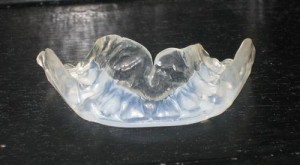Various Types of Sleep Disorder That You Need to Know
You may not know it but your body has some sort of a clock that is internally responsible for regulating how you sleep. The clock permits you to sleep every night and helps you maintain alertness during the day. It works best especially when you are able maintain routines on a regular basis.
The clock works 24 hours, which is why it is commonly referred to as a circadian rhythm. Sometimes, the clock goes out of sync and gets disrupted. This could be as a result of your own doing such as changing shifts at work or something else beyond your control. That is how circadian rhythm sleep disorder comes about. Fortunately, it is disorder that can be easily treated.
Shift Work
Like your doctor may have already told you, shift work sleep disorder is a form of circadian sleep disorder. Anyone suffering from the condition experiences recurrent patterns of sleep interruption because of shift work schedules. This results in difficulties initiating and maintaining sleep. It also makes it difficult for one to remain awake. Other symptoms of the disorder include low energy and headaches.
Nontraditional shifts like rotating shifts often leave people with no choice but adjust their sleep windows. Most of these windows or rather routines are not congruent with their underlying circadian clocks. That explains why shift work is common sleep disorder today. Rotating shifts simply wean signals that one is supposed to receive from the internal clock. This leads to complications when one is trying to fall asleep.
Treatment
It is inherently difficult to treat shift work sleep disorders. Research indicates that some shift schedules are better than others. Unfortunately, most shift workers never have a choice. The best solution involves studying a worker’s circadian clock. Your doctor has to know how it works and find pragmatic solutions that can keep you as alert as possible under unnatural working hours and conditions. Unlike other sleep disorders you do not devices such as the sleep apnea mouth guard.
Sleep Apnea
The name alone sounds irritating. This is a disorder that is in fact worse than shift work. It is divided into two categories.
- Obstructive Sleep Apnea
- Central Sleep Apnea
Both types involve difficulties in breathing. The first one, obstructive sleep disorder, happens to be the most common type of sleep apnea. It happens when your airway repeatedly becomes blocked when you’re asleep because the breathing tissues at the back of your throat relax. You simply get subjected to bouts of breathing cessation, so you wake up for a second or two to breathe then you fall asleep again.
Central sleep apnea, on the other hand, happens when your brain fails to send signals to your breathing tissues that you need to breathe. Fortunately, both OSA and CSA easily go unnoticed because many people consider them as mere annoyance.
Treatment
Your doctor will first examine your condition before deciding how he or she will treat you. You will have to go through a sleep test first, which will help your doctor understand if your sleep disorder can be treated. The test will reveal if you suffer from any of the following:
- Mild sleep apnea
- Moderate sleep apnea
- Severe sleep apnea
Treatment will therefore depend on how far your sleep apnea has progressed. You may have to go for surgery if your sleep apnea has reached severe levels. For mild and moderate sleep apnea, therapies and breathing devices are enough to put the condition under control.
Observing your sleep pattern
Try the best you can to sleep for at least 8 hours a day. Then seek medical assistance anytime you notice common sleep disorder symptoms or anything unusual with your sleep patterns. This is mainly because most sleep disorders are curable if noticed during their toddler stages.



